“The fact that in such a tough environment with so little moisture baobabs produce this enormous amazing incredible fruit” is one of the reasons why the trees are special, says Gus Le Breton. He shares his insights of many years in conservation of indigenous plant species in Zimbabwe and brings up interesting ideas of why baobab is important for a variety of stakeholders. The industrious entrepreneur is co-founder of Phytotrade and founder and CEO of B’Ayoba, a baobab processing company based in Harare, Zimbabwe. We talk about baobabs on our field trip to the Masvingo area where B’Ayoba buys baobab fruit from collectors.
What is so special about baobab?
Gus: The tree is quite astonishing with its amazing variety of shapes and its incredible physical presence. When you stand or sit under a mature baobab you really feel that you are in the presence of something living. It is a remarkable feeling which you don’t get with many trees. You can quite often go inside one – which is an extraordinary experience.
Baobab is striking because of its ability to survive in very harsh dry environments when almost nothing else grows. It draws whatever moisture there is from the soil. Some trees grow on pure rock with their roots reaching down into the soils. I have seen lateral roots 200 meters away from a tree – they spread all over in search of water.
You have to respect their tenacity and their ability to survive – and not only to survive but to be so big. I mean – to have something in an environment of such little moisture and humidity with little other species around grow to such phenomenal size – that is something very special. Baobab is a succulent and botanically not really a tree which is also remarkable.
And then of course there is the fruit. It is a dry fruit which is one of the things that makes it such a phantastic fruit to work with commercially. It is well suited to production by smallholders in rural areas because it does not require complex forms of management.
Storage is much easier, the harvesting. Other fruit like the Acai berry from the Amazon require refrigeration and cold chains. With the baobab fruit there is much more opportunities for smallholders to be involved further up the value chain – not just in terms of harvesting the fruit.
What made you decide to work with baobab?
Gus: Well, I started working with indigenous trees from a conservation point of view. I was looking at areas with loss of forest cover and deforestation trying to figure out the causes and what could be done about it. Obviously the deforestation had negative spinoff effects especially in Zimbabwe. I used to try and convince rural people to plant trees. One day I just realized it is pointless. These people are facing a daily struggle for survival and you try to talk about “esoteric” environmental issues.
The real way to engage with people about the value of trees is to look at their economic value because that is something they understand. The great tragedy with so many indigenous trees is that although people derive a myriad of other goods and services from the trees the one thing that they don’t derive from them by and large is cash. If it comes to a decision whether it is the tree or cash – cash will win.
If you can make the tree synonymous with cash obviously that is a different story. I came to realize that the optimal way to promote sustainable management of trees and woodlands in Zimbabwe was to develop a real economic value for trees and the main constraint to that was marketing. Because these trees produce fruit but they don’t have markets. You look at the baobab and you can see these amazing fruit which are well known and consumed locally – clearly great economic potential but for which there is absolutely no commercial market.
What time are we talking about?
Gus: I started with baobab probably 20 years ago trying to create markets for it. First thing we did was set up a small oil press producing baobab oil in a rural community in the north east of Zimbabwe in 1996. I also started working with Marula oil and a few other similar species and products. The problem we had was that these were totally unknown on the market which we were trying to engage and the production volumes were very small. You might have a rural community producing about 100 kg of baobab oil and a market that has never come across baobab before. You approach sales people and try to sell it but they are not interested in small amounts.
Where does Phytotrade come in?
Gus: In 1998 I said to some of my colleagues ‘if only we could find other people that are also producing baobab oil maybe we could get enough to create some volumes where we can actually engage with the market’. We went for a road trip to South Africa, Botswana and to Namibia. One of the people I met was Cyril Lombard who still works for Phytotrade. We sat one night over a few beers in Windhoek and hatched up the idea of a prototype Phytotrade. After some years we finally formed Phytotrade with a whole range of species and a bigger array of countries.
Why was Phytotrade so important for baobab?
Gus: We wanted to get into the baobab fruit powder production but the issue was the ‘novel foods’ – that is the European standards for importing foods like baobab powder into the EU. Nobody had ever taken an African ingredient through ‘novel foods’ and no one had ever done it without the backing of a major company with a lot of money involved.
Here we were: a bunch of African small scale producers. How was that ever going to work? We thought we’d start and it might take us a while. We did not have enough money for the entire process but we had enough money to start.
We assembled a case to suggest that baobab would be safe hoping that we would not need to prove it. We organised professors, academics and food scientists from Africa to write a testimony saying that baobab had been consumed safely for hundreds of years. We took that to the food standards agency in the UK but they declined arguing that conditions for people in Africa need not be the same as for Europeans.
In a further step we tried to prove that it had been safely consumed in the EU prior to 1997 where we actually found reference about baobab consumption in 16thcentury Italy. But again that was not enough.
Finally we ended up going through the trials with the EU about 2004 and the process took us about two years. We had to collect samples from all over southern Africa and had to show the variations. In 2006 we submitted the application. The review took another two years but finally in 2008 we got the successful ‘novel foods’ approval. It had cost us the best part of half a million US dollars. Had we not done it there would not be a baobab industry in Europe today.
You have set up B’Ayoba – the only Fairtrade certified processing company of baobab so far. When and how did that become important?
Gus: We started with B’Ayoba in 2012 as a bulk ingredients supplier for both the oil and the powder. Soon we realized that there is a market segment of the EU accessible only if you have gone through that Fairtrade certification. But there was no standard for baobab. We had to engage with Fairtrade International (FI) for the development of such a standard. Baobab was a niche product and not a top priority on their list. In the end the standard was developed and naturally we wanted to become Fairtrade certified. In 2013 we applied and went through the process. The Fairtrade certification is associated with a producer group of baobab. It is called the “Fairtrade Support Network of Zimbabwe” and acts like a cooperative with democratically elected structures. We are the buyers and the processors and are certified as such.
Coming back to planting indigenous trees – is that something B’Ayoba is looking into?
Gus: Well, in my experience the sustainability or regeneration of any indigenous tree in communal areas of Zimbabwe depends on different factors than on planting. In 25 years of working with small scale rural producers on environmental and forestry issues I have rarely seen people themselves planting indigenous trees without anyone else initiating it.
These trees regenerate naturally in the wild from seed. With the baobab they particularly regenerate from the root suckers. But those young seedlings emerging from a root or seed get eaten in areas populated with livestock. When people look at protecting or regenerating a species they approach it not by planting but simply by protecting the emerging seedlings. Baobab seedlings are very vulnerable in the first two or three years. After that they get strong enough to survive and grow.
Planting a tree is probably much less valuable than protecting a sapling that has naturally emerged. By the time it emerges it has got roots, it is established and has found the right soil. It would not have come up if it wasn’t in a good place for it to emerge. It is going to survive if you protect it.
That is not the case if you plant it. I have planted thousands of trees and my personal success rate has been low. I think what is more important than planting trees is the protection of the natural seedlings or wildings as they are called when they emerge.
However I do recognize that there are consumers who are very concerned about sustainability and who would like to know that there are trees actually physically being planted. Therefore we do support planting activities – to make sure that anyone purchasing and consuming our products can feel 100% peace of mind that we are doing whatever is necessary for the regeneration of baobabs.
There seems to be a stigma associated with consuming Baobab in Zimbabwe. Can you say something about that?
Gus: The issue for us is trying to develop domestic demand for it – so that the people that live with it know all about it and consume it.
The greater the demand for the product domestically, the greater the value and the greater the economic return to the producers and collectors. In addition if domestic demand grows there is less reliance on fickle export markets which can go up and down particularly with respect to exchange rates involved and changes in the cost of transport. There are many strategic reasons why it is a good idea to develop a domestic market. Which in the case of the baobab in Zimbabwe is not easy.
The fruit is wild, freely available and fairly abundant – people do not see it as a particularly valuable resource. Therefore the idea of a consumer paying money for it can be a bit hard to accept. At the same time there is still a stigma associated with the consumption of anything coming from a rural background.
Zimbabwe is transitioning from a sort of historical traditional rural lifestyle to a more modern kind of westernized urban one. In that process people tend to shun anything associated with their former way of living. So once you live in a city – anything you used to eat as a child growing up in a rural area is probably viewed as a little bit embarrassing and backward. To overcome that can be a big challenge. We have to rebrand baobab for local consumers and to get them to appreciate it.
How do you go about rebranding baobab?
Gus: As it happens at the very same time that we are looking to rebrand it we are also encountering a completely new situation in Zimbabwe. As people have transitioned to a more urban lifestyle we experience the advent of a whole range of urban lifestyle related diseases including hypertension, diabetes, heart diseases and forms of cancer that were unknown to Zimbabwe. Western consumer ailments have started appearing here and are growing very quickly.
Just at the same time that we are trying to rebrand baobab we realize this huge surge in lifestyle diseases – and baobab is the perfect answer to that. Nobody had these diseases when they lived in the rural areas and ate the traditional healthy food around them. So what we have to say to consumers is “that stuff that you ate that you were embarrassed about when you lived in your rural home – if you ate it now you would not get sick.”
Where do you see baobab in future?
Gus: Well, if you look at Acai it was not widely known 15 years ago outside of the Amazon. Today it is everywhere. Baobab will definitely get to that point because it has many advantages – once it is well known, its benefits scientifically well documented and we know how it reacts, mixes and blends with other ingredients. There are enough innovative people experimenting with baobab. It is going to continue to grow because there is no other ingredient ever going to appear with exactly the same profile with the unique combination of vitamins, minerals and nutritional benefits of baobab.
Anything else you consider important about baobab?
Gus: Maybe I am stating the obvious: The most important fact about baobab is that it provides economic opportunities to the poorest people. We have areas in Zimbabwe where we have good soils, good rainfall and high productivity and we have areas with poor soils, low rainfall and low productivity. Utterly without exception the richer people live in the better areas and the poorest people – approximately 25% of the population – live in the dry and very marginal ones.
Rainfalls are unpredictable and there is little arable agriculture so people are mostly looking at livestock. More livestock means less grazing. It is hard to make a decent living just out of livestock. Any other economic activity is a god sent. Turning a tree that has historically been an important source to local nutrition but never a source of cash income into something that can generate cash makes it incredibly important. Especially at that specific time of the year: the cash income from baobab comes in when there is no other source. Baobab fruits during the dry season which is agriculturally unproductive.
If you were to analyse the collectors that sell fruit to us you would find a disproportionally large number of them are female headed households. The husband has died or has gone away to find employment somewhere else. The woman stays at home with her children and she is responsible for raising them, feeding them, schooling them – which is tough. She does not have many ways to earn money. Baobab can help her with that.
If she wants to generate an income from cotton she needs 500 USD at the beginning of the season to buy seed, fertilizer and pesticides because cotton is pest-prone. If she lacks the money she will not grow cotton. On the other hand she does not need a cent to harvest baobab fruit. All she needs to do is go and pick the fruit. We provide the bags, training and everything needed to collect the fruit. We have made sure that the area is certified as organic. Anything else from the land is also organic. People can sell other species like Marula. That provides a whole new theme of commercial opportunity for them which has opened up because of baobab.
More Information: B’Ayoba

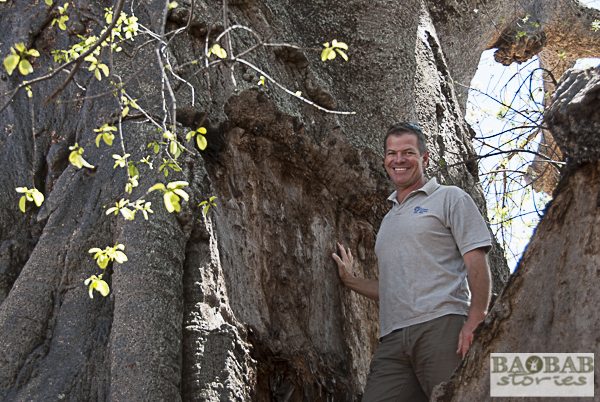

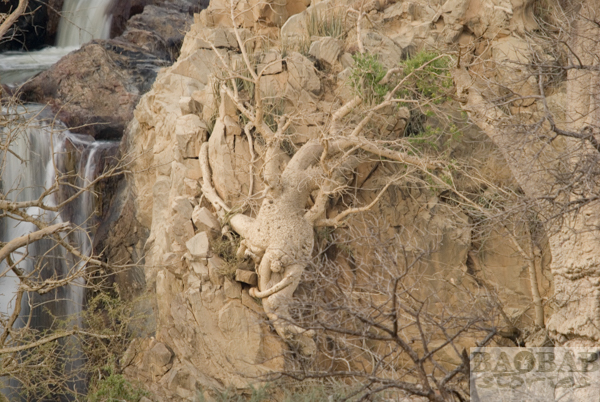

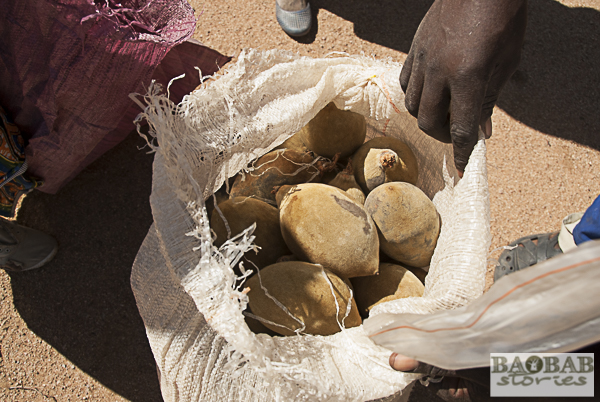




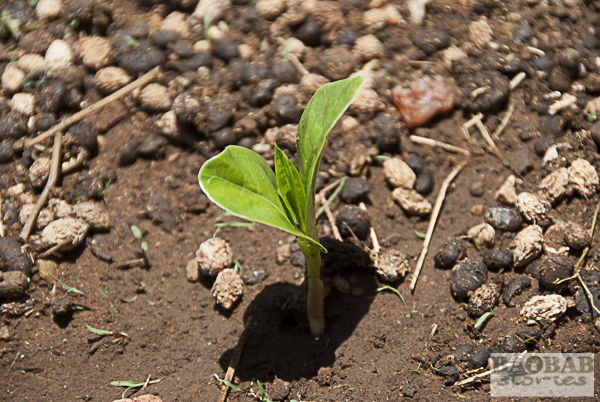






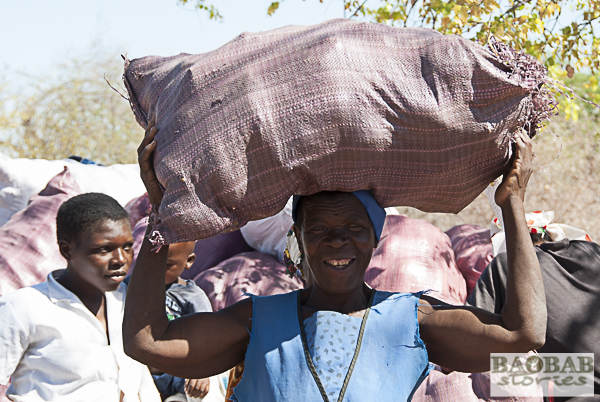
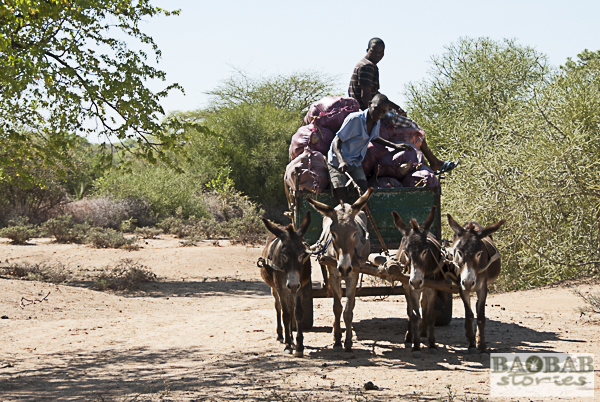
Pingback: Baobab Blitz-Fruit Bats and ethereal flowers | wineandwilddogs
congratulations on a great blog
Hi Lin, thanks for commenting – your description of baobab in Zimbabwe read fabulous! I have responded in a mail. All the best, Heike